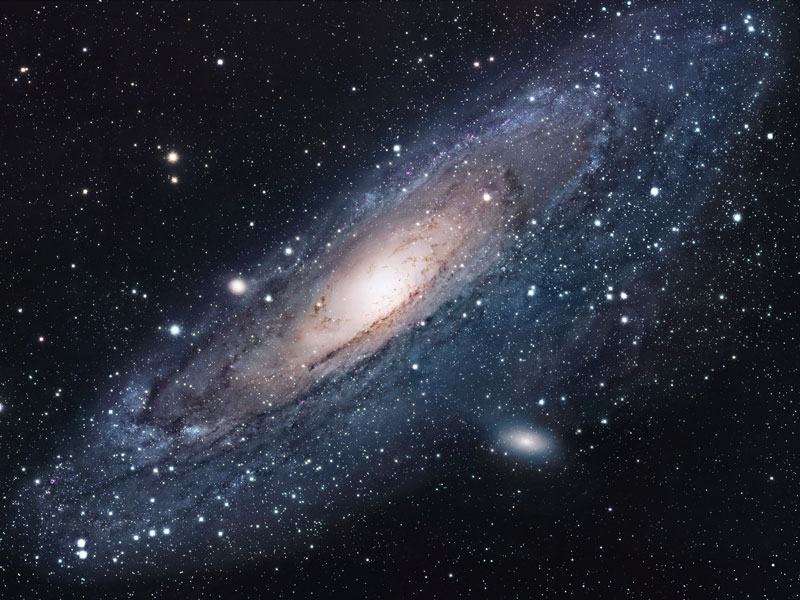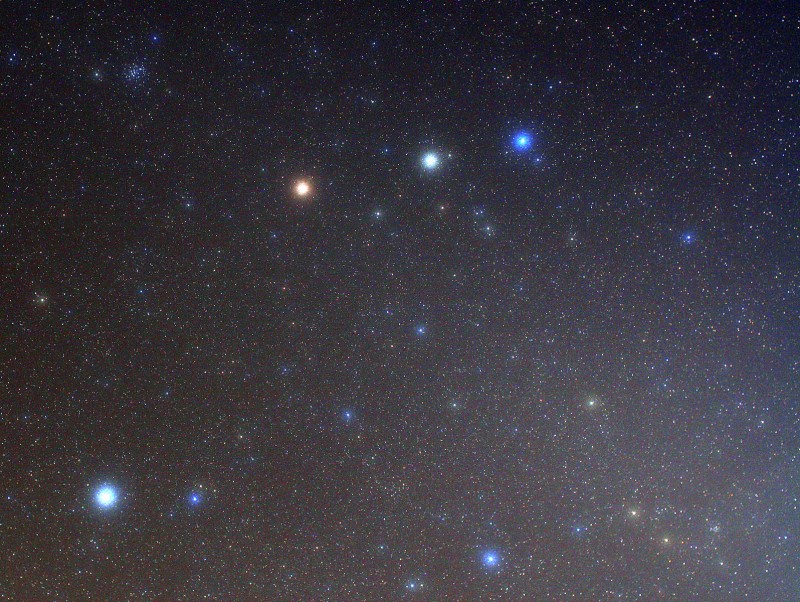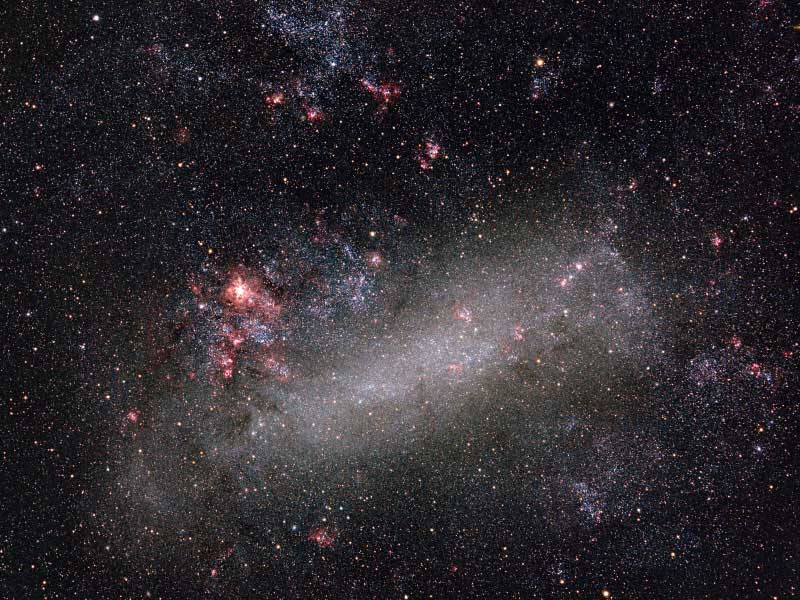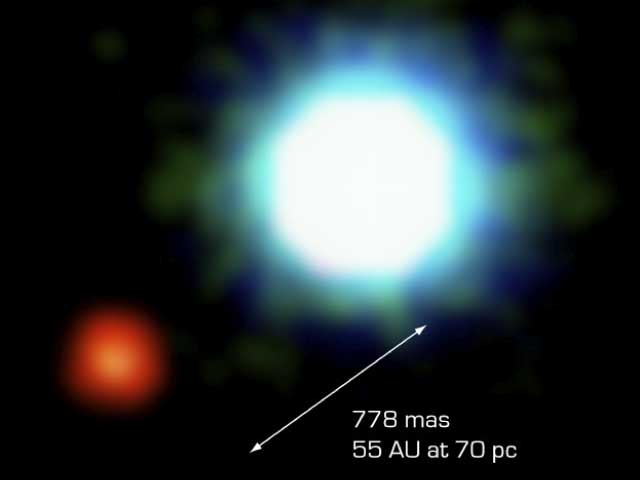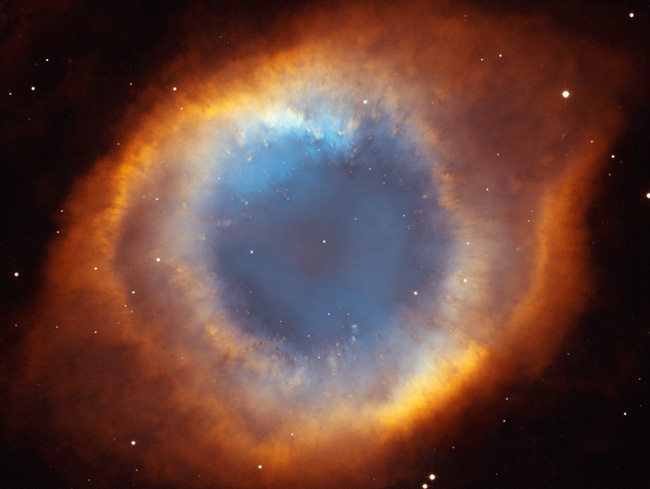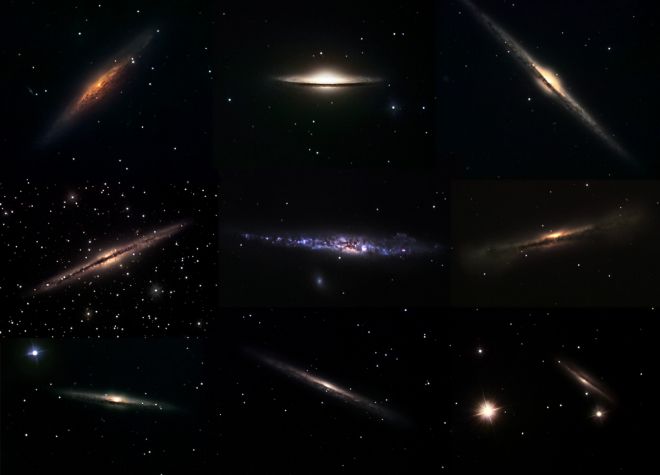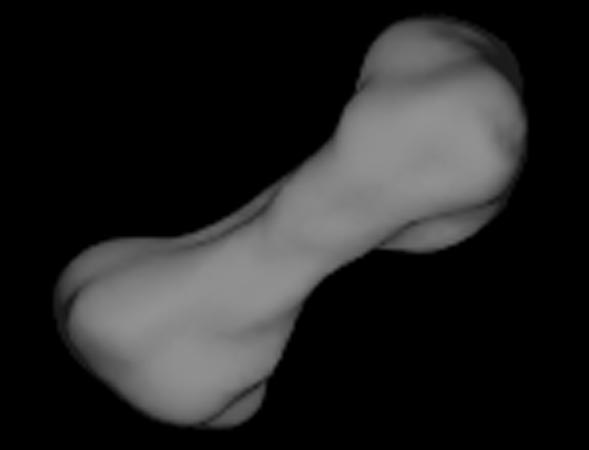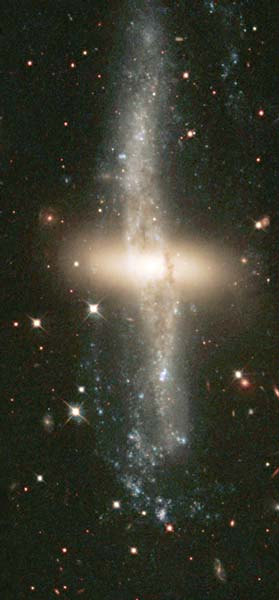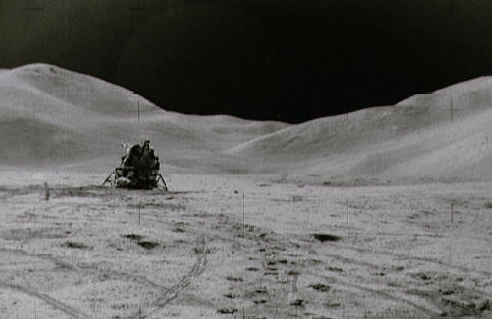| << Previous | Index | Next >> |
2015 The sands of time are running out for the central star of this hourglass-shaped planetary nebula. With its nuclear fuel exhausted, this brief, spectacular, closing phase of a Sun-like star's life occurs as its outer layers are ejected - its core becoming a cooling, fading white dwarf. In 1995, astronomers used the Hubble Space Telescope (HST) to make a series of images of planetary nebulae, including the one above. Here, delicate rings of colorful glowing gas (nitrogen-red, hydrogen-green, and oxygen-blue) outline the tenuous walls of the hourglass. The unprecedented sharpness of the HST images has revealed surprising details of the nebula ejection process that are helping to resolve the outstanding mysteries of the complex shapes and symmetries of planetary nebulas.
2014
2013 Face-on spiral galaxy M77 lies a mere 47 million light-years away toward the aquatic constellation Cetus. At that estimated distance, the gorgeous island universe is about 100 thousand light-years across. Also known as NGC 1068, its compact and very bright core is well studied by astronomers exploring the mysteries of supermassive black holes in active Seyfert galaxies. M77 is also seen at x-ray, ultraviolet, infrared, and radio wavelengths. But this sharp visible light image based on Hubble data follows its winding spiral arms traced by obscuring dust clouds and red-tinted star forming regions close in to the galaxy's luminous core.
2012 It was really not about superheroes as on May 6 the much touted Super Moon, the largest Full Moon of 2012, rose over this otherwise peaceful harbor. And no supervillains were present either as boats gently rocked at their moorings near the checkerboard La Perdrix lighthouse on the coast of Brittany, France. But the rise of the Super Moon was preceded by a Green Flash, captured in the first frame of this timelapse video recorded that night. The cropped image of the frame, a two second long exposure, shows the strongly colored flash left of the lighted buoy near picture center. While the Super Moon was enjoyed at locations all around the world, the circumstances that produced the Green Flash were more restrictive. Green flashes for both Sun and Moon are caused by atmospheric refraction enhanced by long, low, sight lines and strong atmospheric temperature gradients often favored by a sea horizon.
2011 Does gravity have a magnetic counterpart? Spin any electric charge and you get a magnetic field. Spin any mass and, according to Einstein, you should get a very slight effect that acts something like magnetism. This effect is expected to be so small that it is beyond practical experience and ground laboratory measurement. In a bold attempt to directly measure gravitomagnetism, NASA launched in 2004 the smoothest spheres ever manufactured into space to see how they spin. These four spheres, each roughly the size of a ping-pong ball, are the key to the ultra-precise gyroscopes at the core of Gravity Probe B. Last week, after accounting for persistent background signals, the results were announced -- the gyroscopes precessed at a rate consistent with the gravitational predictions of Einstein's General Theory of Relativity. The results, which bolster existing findings, may have untold long term benefits as well as shorter term benefits such as better clocks and global positioning trackers.
2010
Click to play embedded YouTube video.
Credit: NASA/Goddard/SDO AIA Team
2009 Andromeda is the nearest major galaxy to our own Milky Way Galaxy. Our Galaxy is thought to look much like Andromeda. Together these two galaxies dominate the Local Group of galaxies. The diffuse light from Andromeda is caused by the hundreds of billions of stars that compose it. The several distinct stars that surround Andromeda's image are actually stars in our Galaxy that are well in front of the background object. Andromeda is frequently referred to as M31 since it is the 31st object on Messier's list of diffuse sky objects. M31 is so distant it takes about two million years for light to reach us from there. Although visible without aid, the above image of M31 is a digital mosaic of 20 frames taken with a small telescope. Much about M31 remains unknown, including how it acquired its unusual double-peaked center.
2008 Wandering through the evening sky, on May 4th planet Mars stood in line with Castor and Pollux, the two bright stars of the constellation Gemini. In this time exposure of the celestial alignment, Mars actually takes on a distinct yellowish hue, contrasting in color with Pollux; a giant star known to have a Jupiter-class planet, and Castor; itself a multiple star system. Though in mythology Pollux and Castor are twin brothers, the two stars are physically unrelated and are about 34 and 50 light-years distant respectively. Included in the skyview are Procyon, alpha star of Canis Minor, and famous star cluster M44 also known as the Beehive Cluster. Dust in our own solar system reflecting sunlight creates the faint band of Zodiacal light emerging from the lower right corner of the frame. Just put your cursor over the picture for help with identifications. Of course, bright Mars can still be found in the western evening skies and tonight wanders near the crescent Moon.
2007
2006 Portuguese navigator Fernando de Magellan and his crew had plenty of time to study the southern sky during the first circumnavigation of planet Earth. As a result, two fuzzy cloud-like objects easily visible for southern hemisphere skygazers are known as the Clouds of Magellan. Of course, these star clouds are now understood to be dwarf irregular galaxies, satellites of our larger spiral Milky Way galaxy. The Large Magellanic Cloud (LMC) pictured above is only about 180,000 light-years distant in the constellation Dorado. Spanning about 15,000 light-years or so, it is the most massive of the Milky Way's satellite galaxies and is the site of the closest supernova in modern times. The prominent red knot on the left is 30 Doradus, or the Tarantula Nebula, a giant star-forming region in the Large Magellanic Cloud.
2005 It's the faint red object, not the bright white one that might be a historic find. The white object is surely a brown dwarf star. Quite possibly, however, the red object is the first direct image of a planet beyond our Solar System. The intriguing possibility was first reported last year, but many astronomers weren't then convinced that the "planet" was not just a background star. Earlier this year, the 2M1207 star system was imaged twice more in an effort to resolve the issue. To the delight of the scientific team, the objects kept the same separation, indicating that they are gravitationally bound. The faint red object 2M1207b is therefore 100 times fainter, intrinsically, than the bright white brown dwarf 2M1207a -- a characteristic well explained by a planet roughly five times the mass of Jupiter. The discovery - still subject to further confirmation - is considered a step toward the more ambitious goal of imaging Earth-like planets orbiting distant stars. The above image was taken with the high-resolution adaptive-optic NaCo camera attached to the 8-meter Very Large Telescope Yepun in Chile.
2004 Scroll right to see the inside of Endurance Crater, the large impact feature now being investigated by the Opportunity rover rolling across Mars. The crater's walls show areas of light rock that might hold clues about the ancient watery past of this Martian region. Inspection of this true-color image shows, however, that much of this interesting rock type is confined to crater walls that might be hard for even this wily robot to access. Both of the Mars rovers have now successfully completed their original mission and are now exploring topical opportunities.
2003 Will our Sun look like this one day? The Helix Nebula is the closest example of a planetary nebula created at the end of the life of a Sun-like star. The outer gasses of the star expelled into space appear from our vantage point as if we are looking down a helix. The remnant central stellar core, destined to become a white dwarf star, glows in light so energetic it causes the previously expelled gas to fluoresce. The Helix Nebula, given a technical designation of NGC 7293, lies about 650 light-years away towards the constellation of Aquarius and spans about 2.5 light-years. The above picture is a composite of newly released images from the ACS instrument on the Hubble Space Telescope and wide-angle images from the Mosaic Camera on the WIYN 0.9-m Telescope at Kitt Peak National Observatory. A close-up of the inner edge of the Helix Nebula shows complex gas knots of unknown origin.
2002
[imghover6=http://apod.nasa.gov/apod/image/0205/planets1_orman.jpg]http://apod.nasa.gov/apod/image/0205/planets2_orman.jpg[/imghover6]Credit & Copyright: Joe Orman
2001 Spiral galaxies viewed face-on display a grand design, with graceful spiral arms traced by bright star clusters and glowing stellar nurseries. When seen edge-on, their appearance is very different but no less striking as their central regions bulge and dark cosmic dust lanes appear silhouetted against starlight from flattened galactic disks. This masterful mosaic of digital images shows nine prominent edge-on spirals arranged as follows: top; NGC2683, M104, NGC4565, middle; NGC891, NGC4631, NGC3628, and bottom; NGC5746, NGC5907, and NGC4217. Perhaps the best known of these is M104 (NGC4594) whose more descriptive moniker is the Sombrero Galaxy. Notably, the edge-on perspective of these galaxies allows a measurement of their galactic rotation speed using the Doppler effect. Plotting rotation speed versus distance from the center determines a galaxy's gravitational mass and historically led to premier evidence for mysterious Dark Matter.
2000 An asteroid the size of New Jersey that orbits the Sun between Mars and Jupiter has been discovered to have an unusual dog-bone shape. Asteroid 216 Kleopatra, recently mapped with Earth-based radar, reflects radio waves so well that astronomers speculate it is composed mostly of metals such as nickel and iron. The unusual shape and composition of 216 Kleopatra may derive from the central regions of a tremendous collision between larger asteroids billions of years ago. Kleopatra is not completely solid - its surface is loosely consolidated rubble, although its core may contain large solid-metal lodes. Kleopatra will never strike the Earth, but it may one day serve as a valuable source of raw building materials.
1999 NGC 4650A appears to be two galaxies in one. A rare type of galaxy known as a Polar Ring, NGC 4650A is composed of an old central group of stars and a young ring of stars rotating farther out. Both components are clearly visible in this featured photograph by the Hubble Space Telescope. What creates Polar Ring Galaxies is still being researched, but a leading theory is the collision of two distinct galaxies in the distant past. Polar Ring Galaxies allow astronomers to estimate the amount of dark matter in galaxies by measuring the rotation rate of the highly extended ring. An unknown type of dark matter is implied because the ring typically rotates too fast to be held together by only the visible stars.
1998 Skylab was an orbiting laboratory launched by a Saturn V rocket in May 1973. Skylab was visited three times by NASA astronauts who sometimes stayed as long as two and a half months. Many scientific tests were performed on Skylab, including astronomical observations in ultraviolet and X-ray light. Some of these observations yielded valuable information about Comet Kohoutek, our Sun and about the mysterious X-ray background - radiation that comes from all over the sky. Skylab fell back to earth on 11 July 1979.
1997 Could you ever call this place home? The lunar module shown above, named "Falcon," served as home for Apollo 15 astronauts David Scott and James Irwin during their stay on the Moon in July and August 1971. Meanwhile, astronaut Alfred Worden circled in the command module overhead. Harsh sunlight on the grey lunar surface lends the image an eerie quality, while the Lunar Apennine Mountains frame the background with Mount Hadley Delta visible on the right. Visible in the foreground are tracks from the first Lunar Roving Vehicle, an electric car which enabled the astronauts to explore extended areas on the lunar surface. Apollo 15 confirmed that most lunar surface features were created by impacts. Rocks returned by the Apollo 15 crew included green glasses whose formation mechanism is still unclear.
1996
| << Previous | Index | Next >> |





